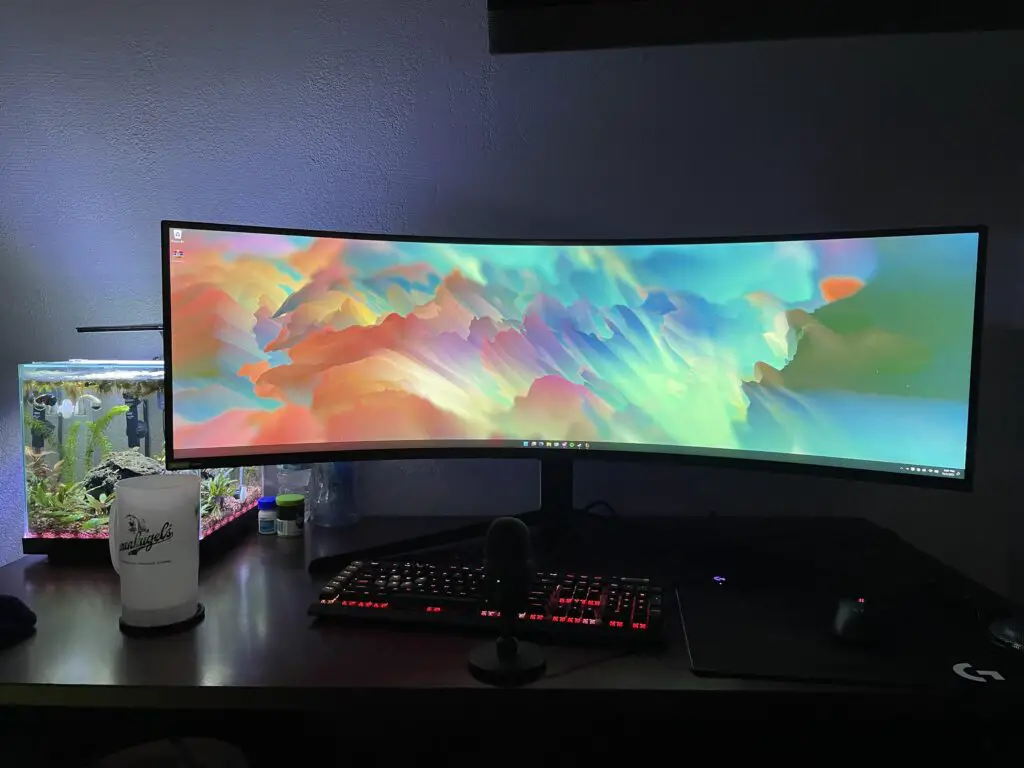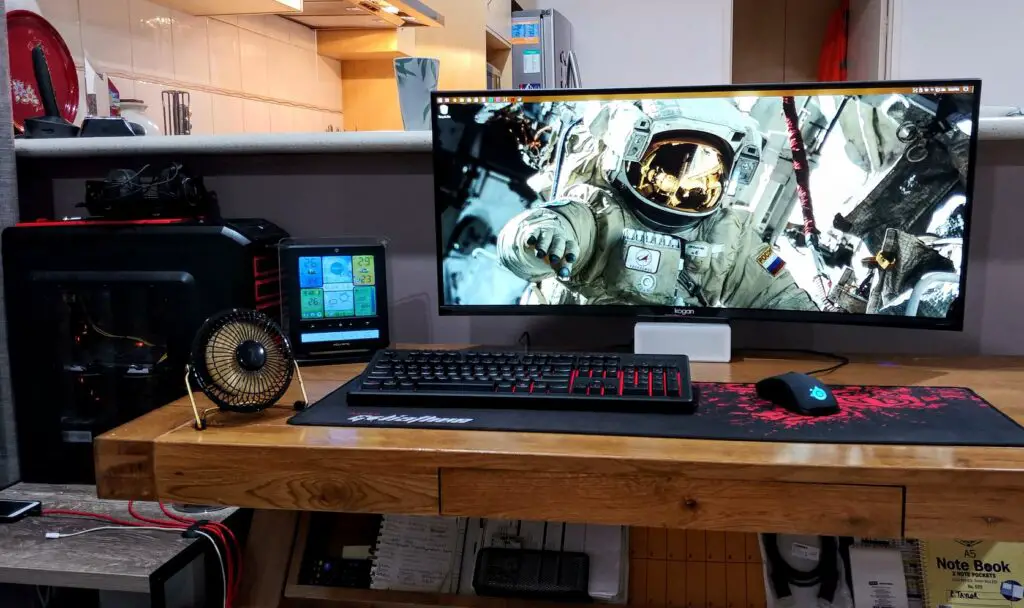Do you want to purchase a new monitor but can’t seem to decide between an Ultrawide vs 144Hz?
People have been raving about the Ultrawide monitor, but is it better than the standard 144Hz monitor?
This article will analyze both monitors and answer any questions you may have concerning them.
144Hz vs Ultrawide Monitors
Here is a breakdown of how both monitors perform
Ultrawide
Ultrawide monitors have become popular due to their 21:9 aspect ratio. These monitors provide more screen space for entertainment, productivity and games.
With an ultrawide monitor, you don’t need to use two monitors anymore. You’ll enjoy having an overview of all your work on one screen.
Regular monitors have a 16:9 ratio, while the screen ratio of ultrawide monitors is 21:9. This is 33% more screen space in width.

The extra 33 % screen space makes it easy to work with two or more windows next to each other. The extra space should come in handy during office work, image editing, and graphic design.
Most ultrawide monitors have a split-screen feature that allows you to divide your screen into multiple panes.
This way, you can have various windows showing on the screen and continue to work on your project.
Ultrawide monitors are the real deal when it comes to watching cinematic content. You can watch films in their native 21:9 ratio without dealing with pesky black bars.
So, if you care more about in-game visuals than smoothness, an ultrawide will serve you better.
Although ultrawide provide an immersive gaming experience, they are not great for competitive games.
Besides, most competitive games lack 21:9 support, meaning you’ll be stuck with pesky black bars on the sides.
Pros
- Great for productivity
- It comes with so many ports
- Immersive gaming experience
- Wider field of view
- Great for watching videos and movies
Cons
- They are expensive
- Non-standard resolution
- It’s power-hungry
- Lower refresh rates
144Hz Monitors
144Hz monitors are considered the standard for gaming, and hardcore gamers would choose a 144Hz monitor over an ultrawide any day.
144Hz monitors have higher refresh rates, meaning they can generate smoother motion in a 3D-rendered environment. Besides, these monitors can prove helpful if you use them in multiplayer games.
So, 144Hz monitors can help you become a better player in competitive games.

Although 144Hz monitors have fast response times, they are not suitable for non-gamers. So, if you need a monitor for productivity and office work, you are better off with a 60Hz or Ultrawide monitor.
144Hz monitors have a 16:9 aspect ratio, meaning they are not great for watching movies.
Besides, these monitors have a low screen resolution, thus making it hard for graphic designers and photo editors to use them.
Pros
- Responsive gaming experience
- Great for competitive gaming
- Low input lag
- Higher frame rate
- They are cheaper
Cons
- The screen isn’t large
- Not ideal for productivity
- Pesky black bars on the sides when watching movies
Is An Ultrawide Gaming Monitor Worth It?
An ultrawide gaming monitor is worth it, considering the extra screen size. Gaming on a large screen should give you an immersive experience, especially if the games support the 21:9 ratio.
Besides, the wide field of view is a huge plus when gaming with a friend.
The incredible in-game visuals should also make the ultrawide gaming monitor worth it.
Is A Normal 144Hz Screen Worth It?
A standard 144Hz screen is worth the cost because of the high refresh rate. With a 144Hz screen, you can expect smoother animations, less ghosting, less screen tearing, and a bit of a competitive edge when gaming.
Final Thoughts
Ultrawide monitors are pretty great for both gaming and productivity. Their extra screen space and screen resolution are what makes them popular.
144Hz is excellent for competitive gaming, but It’s not ideal for productivity and watching cinematic content.
